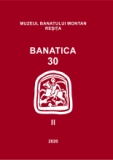Pierderile Banatului in razboiul austro-turc din 1788–1789
Losses in the Banat during the Austrian–Turkish war in 1788–1789
Author(s): Costin FeneșanSubject(s): Local History / Microhistory, Military history, 18th Century, The Ottoman Empire
Published by: Editura Mega Print SRL
Keywords: Banat; Banatian border-regiments; Orșova; Mehadia; Caransebeș; Nicolae Stoica de Haţeg;
Summary/Abstract: During the Austrian-Turkish war from 1788-1791 a part of the military operations displayed on the south-eastern and southern territory of the Banat. In the main region, the Austrian-Turkish clashes in June–September 1788, starting from Orșova in direction to Caransebeș–Lugoj or in the Danube valley with Belgrade as goal, as well as the military developments in August–September 1789, affected heavily the local population and its assets. As part of the main operative army under the command of Emperor Joseph II., the two Banatic border-regiments (i. e. the Romanian-Illyric and the German-Banatic) were intensively involved in actions against the Turkish troops. At the same time, several villages of the Caraș and Timiș counties suffered important material and human losses by secondary Turkish attacks. The military operations affected no less than 249 villages and towns in the Banat – over one third of the province –, meaning 195 in the Banatic Military Border (111 on the territory of the Romanian-Illyric Regiment and 43 on the territory of the German-Banatic Regiment), 39 in the Caraș county and 15 in the Timiș county. The damages due to Turkish attacks in June– September 1788 raised in Carș county up to 360 793 fl. 59 cr., while their amount in Timiș county reached to 142 329 fl. 6 cr., a global of 503 123 fl. 5 cr. for the civilian territory of the Banat. It is to be pointed out, that in 1787 the revenues of the state in Caraș county consisted in 76 622 fl. 3 2/8 cr. and 719 567 fl. 39 ½ cr. in Timiș county. In the Banatic Military Border the human and material toll in the 195 villages and towns with their about 130 000 inhabitants proved to be more dramatic. 60 orthodox and seven catholic churches, one orthodox and four catholic monasteries, 15 German schools, 40 “national” schools (Romanian or Serbian) in the villages, 6936 houses, ten horse mills and over 200 military and civilian buildings were totally destroyed. Other 66 orthodox and eight catholic churches, one catholic monastery, 24 German schools, 26 “national” schools, 14 244 houses, 36 horse mills and over 250 military and civilian buildings were more or less damaged. Over 80% of all material damages affected the territory of the Romanian-Illyric Regiment, as being on the main direction of the advancing Turkish army. In terms of money, the material losses in the Banatic Military Border are to be estimated at several million Austrian florins. Far higher is the tall of human losses. While the number of locals killed by the Turkish army is in no way to be estimated, according to Austrian military records, 7910 inhabitants from the Banatic Military Border (90,29% of them being from the territory of the Romanian-Banatic Regiment) – i. e. 1362 men, 2014 women, 2210 boys and 2324 girls – were taken to slavery in the Ottoman Empire. This are underestimated figures, the real number is to be considered at about 10 000 slaves, meaning 7,50% of the entire population in the Banatic Military Border. Between 23 000 and 40 000 locals were forced to flee, seeking for refuge, in many situations for half a year, in the neighborhood (Timiș and Arad counties) or even in Hungary.
Journal: BANATICA
- Issue Year: 2/2020
- Issue No: 30
- Page Range: 233-274
- Page Count: 42
- Language: Romanian

